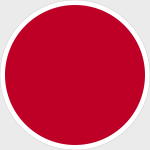Dragon DRR60609 Imperial Japanese Navy Late Production Type 2 "Ka-Mi" Amphibious Tank with Floating Pontoons - Ormoc Leyte, Philippines, 1944 (1:72 Scale)
"I have always considered Saipan the decisive battle of the Pacific offensive (it was) the naval and military heart and brain of the Japanese defense strategy."
- Lieutenant General Holland M. Smith, Commander of the US Fleet Marine Force in the Pacific, July 1944
 The Special Type 2 Launch Ka-Mi was the Imperial Japanese Navy's first amphibious tank. The Type 2 Ka-Mi was based on the Imperial Japanese Army's Type 95 Ha-Go light tank with major modifications, and was a capable armored fighting vehicle on both land and at sea.
The Special Type 2 Launch Ka-Mi was the Imperial Japanese Navy's first amphibious tank. The Type 2 Ka-Mi was based on the Imperial Japanese Army's Type 95 Ha-Go light tank with major modifications, and was a capable armored fighting vehicle on both land and at sea.
The Type 2 Ka-Mi was based on the Army's Type 95 Ha-Go light tank, but with an all-welded hull with rubber seals in place of the riveted armor. It was intended to be water-tight. Large, hollow pontoons made from steel plates were attached to the front glacis plate and rear decking to give the necessary buoyancy. The front pontoon was internally divided into eight separate compartments to minimize the effects of damage from flooding and shellfire. These flotation devices could be jettisoned from inside the tank once the tank landed and commenced ground combat operations.
The Type 2 Ka-Mi's gun turret with a high-velocity Type 1 37 mm gun and a coaxial Type 97 light machine gun was able to rotate 360. A second Type 97 light machine gun was located in the tank's bow. Occasionally Type 2 Ka-Mi's were armed with a pair of naval torpedoes; one on either side of the hull. The Type 2 Ka-Mi could also be launched from the deck of a submarine.
The Type 2 Ka-Mi was capable of attaining speeds of 10 km/h in the water with a range of 150 km through two propellers situated at the rear of the hull, powered by the tank's engine. Steering was in the control of the tank commander, who operated a pair of rudders from the turret through cables. That the crew included an onboard mechanic is an indication of the complexity of the design.
The Ka Mi was the first amphibious tank used by the Imperial Japanese Navy (IJN), and it was based on the Type 95 Ha-Golight tank. It was designed for Japanese landing forces performing amphibious invasions of Pacific islands and regular port facilities. Production of the Type 2 commenced in 1942 and a total of 184 amphibious tanks were made, although the design was too late to participate in Japans island-hopping campaign. When used in water, large pontoons were attached to the glacis plate and rear deck to give it a top speed of 10km/h in water. These pontoons could be shed as soon as the vehicle reached land.
Sold Out!
Dimensions:
Length: 4-inches
Width: 1-inch
Release Date: November 2014
Historical Account: "Jungle Rot" - During the Second World War the town of Aitape was occupied, along with the rest of the Territory of New Guinea, by the Imperial Japanese Army.
During the recapture, American forces bypassed the Japanese 18th Army based at Wewak, taking Aitape on April 22nd, 1944. A base was developed here and repulsed a major Japanese counter-attack. The Americans were content to hold Aitape and not advance far towards Wewak. In fact, Aitape was captured as part of a 3-pronged invasion by the Allies (Aitape, Vanimo, Hollandia). There was little or no strategic gain to be had in doing so as the Japanese force based at Wewak no longer posed a real threat - cut off, short of supplies, and weakened from battle and diseases. In mid-1944, General Douglas MacArthur, the American Commander-in-Chief of Allied forces in the South-West Pacific Area, secured an agreement from the Australian government for Australian forces to take over at Aitape. MacArthur then continued island hoping in preparation for the re-capture of the Philippines.
The Aitape-Wewak campaign was the final Australian military campaign on mainland New Guinea. It ran from November 1944 to the wars end in August 1945. It was fought by the 6th Division, Australian Imperial Force (AIF) with air and naval support.


